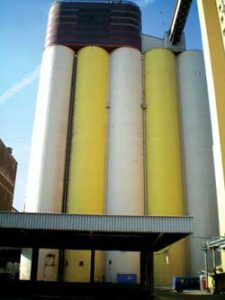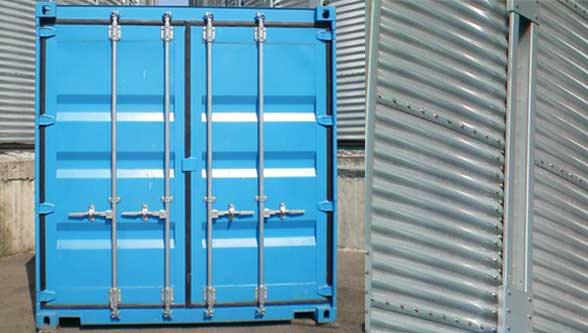BOGE blueprotect gives protection from pests in grain storage
To provide better protection from pests for grain stored in silos, the compressed air specialist BOGE has developed a method that is as simple as it is effective. With blueprotect, BOGE uses nitrogen from the ambient air. This removes the oxygen from the silo and therefore takes away the means of survival for pests and fungi.

Granary weevils, parasitic fungi, mice and rats: a large part of the grain stored worldwide falls victim to pests and so-called breathing losses. Oxygen plays a critical part in this. Lack of oxygen minimises storage losses. blue protect is based on this simple principle. BOGE feeds a mix of gases into the grain silos – consisting of almost pure nitrogen with a maximum of one per cent residual oxygen. The nitrogen drives out the oxygen, thereby removing aerobes, and thus the means of survival for pests and fungi. At the same time, the effect of breathing losses is minimised, and the risk of smouldering fires is decreased.
For blueprotect, BOGE uses nitrogen from the ambient air. A compressor produces compressed air close to the silo. It reaches a membrane filter via a dryer and combined filter, which separates the nitrogen (N2) from the oxygen (O2) and feeds it into the silo. As a main component of the air we breathe, nitrogen is available in unlimited supplies, and is completely harmless when in contact with foodstuffs. After use, the nitrogen is re-absorbed into the ambient air. This makes blueprotect an attractive method of pest control wherever the use of chemical agents is not permitted or desirable – for example, in ecological farming or in the supply chain for breweries. Malting plants, for instance, have to ensure that no chemical residues are left behind in the barley; these could later find their way into the beer with the malt when brewing.
The processing is straightforward for the user: BOGE arranges all plant components in a container, so that blue protect can be placed flexibly, without special prior knowledge and in different types of silos. BOGE analyses the starting position with the customer to record the initial nitrogen requirement.
For more information
www.boge.com/en



